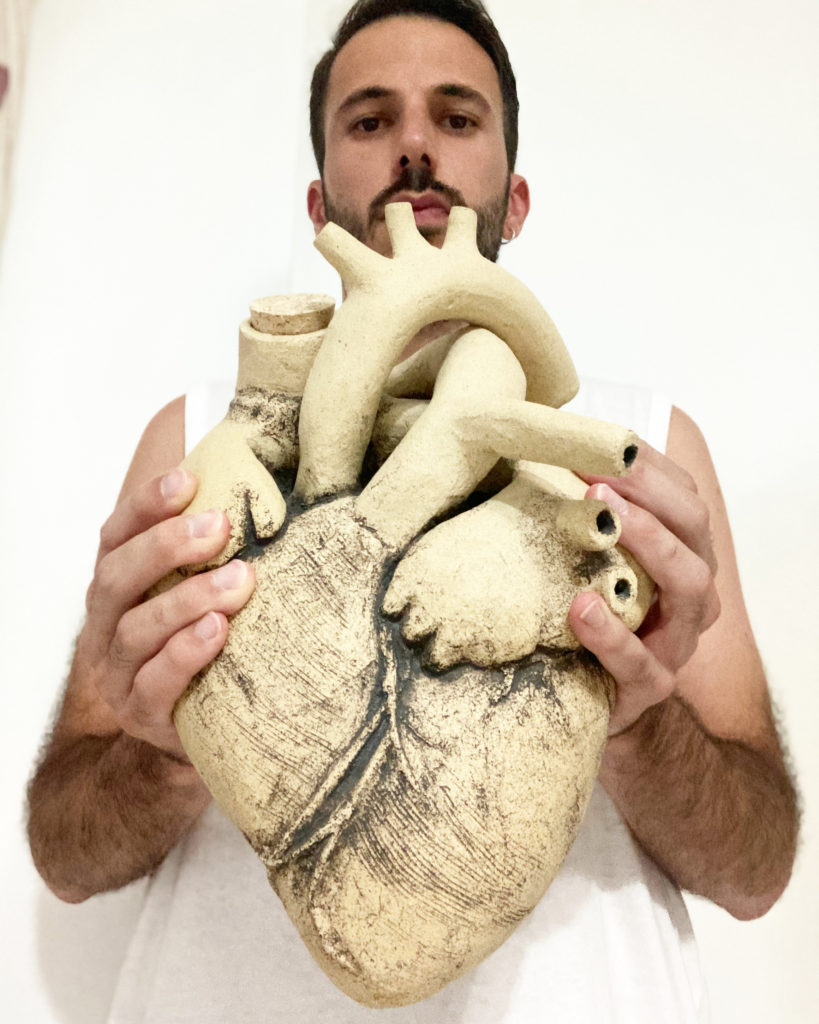
“En el vino (está) la verdad”.
«In vino veritas» (In wine, there is Truth)
“Donde no hay vino no hay amor”. Eurípides.
«Where there is no wine, there is no love». Euripides
“Corazón de vino” es una obra que surge como trabajo para la clase de Volumen Cerámico del Ciclo Superior de Cerámica Artística de la Escuela de Arte Dionisio Ortiz de Córdoba. El requisito del trabajo era el modelado de una pieza de cerámica utilitaria inspirada en la naturaleza.
«Corazón de vino» (Wine heart) is a piece that arises as a work for the Ceramic Volume class of the Higher Studies of Artistic Ceramics at Dionisio Ortiz School of Art in Córdoba. The requirement of the job was the modeling of a nature-inspired piece of utilitarian pottery.
Si pensamos en naturaleza pensamos en todo lo que nos rodea, todo menos nosotros mismos. El hombre es naturaleza y a veces se nos olvida, por eso decidí inspirarme en la naturaleza humana. ¿Cuál es la esencia del hombre, lo que lo mantiene vivo? El corazón. No podemos vivir sin el corazón, igual que no podemos vivir sin agua. Bebemos de nuestro corazón, bebemos sangre, roja como el vino. La forma del corazón está diseñada para recibir y expulsar líquido, igual que la de cualquier vasija. Por todo esto decidí realizar un porrón de vino con forma de corazón.
If we think of nature, we think of everything that surrounds us, everything except ourselves. Mankind is nature and sometimes we forget it, that is why I decided to be inspired by human nature. What is the essence of man, what keeps him alive? The heart. We cannot live without the heart, just as we cannot live without water. We drink from our hearts, we drink blood, red as wine. The shape of the heart is designed to receive and expel liquid, just like that of any vessel. For all this I decided to make a heart-shaped bottle of wine.
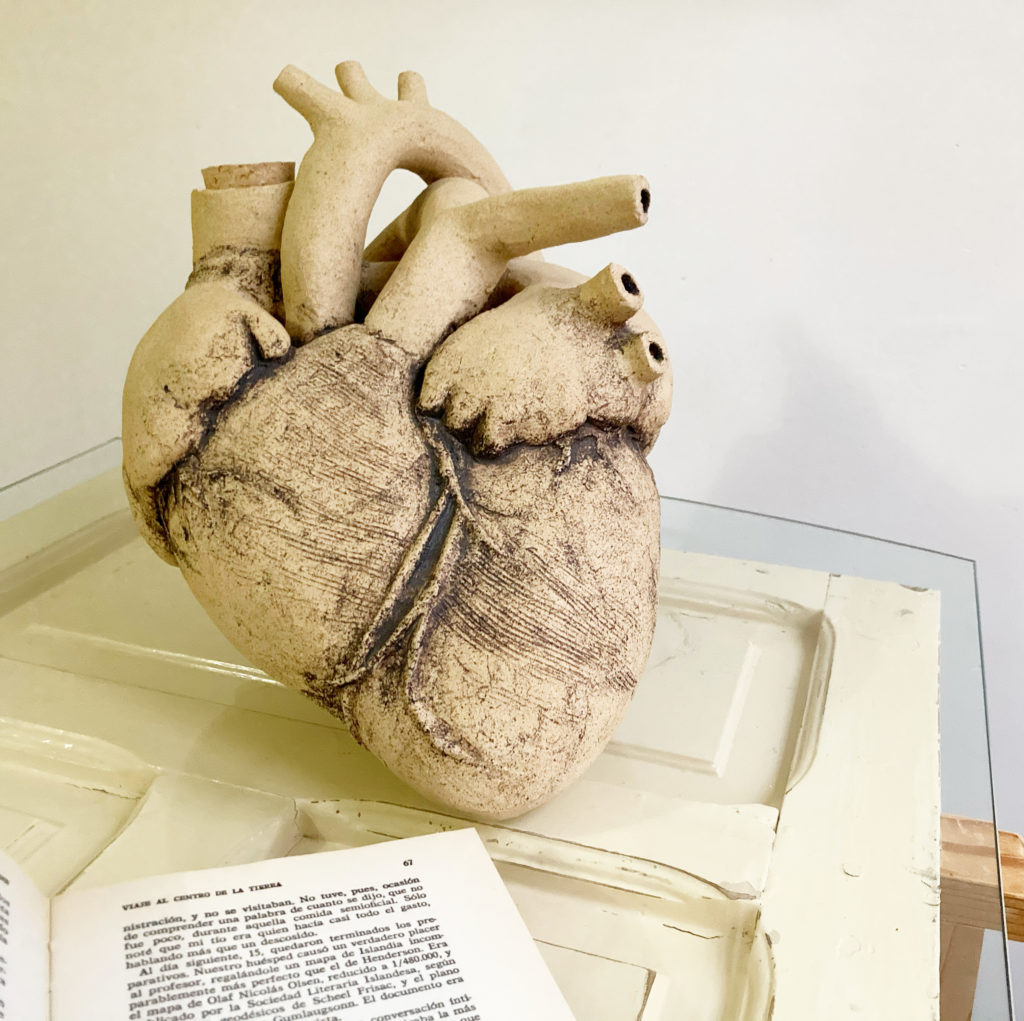
“El arte no debe ser una simple imitación, debe ser una imitación simbólica”. Aristóteles.
«Art must not be simple imitation, it must be a symbolic imitation». Aristotle.
Para contextualizar esta obra en la historia del arte, y dado que la primera premisa del trabajo era la realización de una obra inspirada en la naturaleza, tenemos que considerar la incesante inspiración de los artistas universales en la naturaleza. Desde las representaciones de manadas de caballos y bisontes del paleolítico, pasando por los paisajes del Renacimiento y el Barroco, las odas a la naturaleza de los poetas románticos, la representación más objetiva del realismo y el naturalismo, los juegos de pinceladas de los cuadros impresionistas, hasta cualquier performance en consonancia con la naturaleza del arte contemporáneo. No son pocos los filósofos que se han pronunciado sobre esta relación arte-naturaleza:
In order to put this work in the history of art context, and since the first premise of the work was the realization of a piece inspired by nature, we have to consider the incessant inspiration of universal artists in nature. From the representations of herds of horses and bison of the Paleolithic, passing through the landscapes of the Renaissance and the Baroque, the odes to nature of the romantic poets, the most objective representation of realism and naturalism, the games of brushstrokes of impressionist paintings , even any performance in keeping with the nature of contemporary art. Many philosophers have spoken about this art-nature relationship:
“El arte puede cumplir un destino que la naturaleza no puede: puede ofrecer belleza y fealdad a través de un objeto. Una hermosa pintura de un rostro feo puede incluso llegar a ser bella”. Kant.
«Art can fulfill a destiny that nature cannot: it can offer beauty and ugliness through an object. A beautiful painting of an ugly face can even turn out to be beautiful». Kant.
Si nos fijamos en la pieza, además, nos damos cuenta de que se trata de una representación realista de la naturaleza. El realismo en el arte consiste en la mímesis, la imitación fidedigna de la naturaleza, por un lado; y la representación de objetos y situaciones de la vida cotidiana (un porrón es un objeto cotidiano) por otro. Descarta idealizaciones, cánones de belleza perfecta, muestra al individuo y al objeto tal y como son.
If we look at the piece, we also realize that it is a realistic representation of nature. Realism in art consists of mimesis, the faithful imitation of nature, on the one hand; and the representation of objects and situations of everyday life (a bottle is an everyday object) by another. It discards idealizations, canons of perfect beauty, and shows the individual and the object as they are.
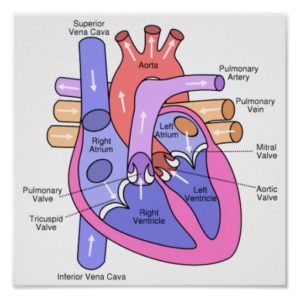
ESTUDIO PREVIO / RESEARCH
Pero cualquier representación artística realista que se precie requiere de un estudio y documentación de la realidad. En este caso, antes de realizar los bocetos iniciales y decidir el diseño definitivo de la obra, se ha seguido un proceso de documentación gráfica y teórica sobre la anatomía del corazón humano. Saber qué tipo de dirección lleva la sangre en cada una de las salidas o arterias me ha ayudado a decidir cuál será la entrada de líquido y cuál el pitorro o salida. Así, he decidido mantener la vía de entrada de la sangre en el corazón – Vena cava superior – como vía de entrada del vino en el porrón. El pitorro, por su posición alta y su longitud, será la arteria pulmonar.
But any realistic artistic representation worth its salt requires a study and documentation of reality. In this case, before making the initial sketches and deciding on the final design of the work, a process of graphic and theoretical documentation on the anatomy of the human heart has been followed. Knowing what type of direction the blood takes in each of the outlets or arteries has helped me decide which will be the liquid inlet and which will be the spout or outlet. Thus, I have decided to keep the route of entry of the blood into the heart – Superior vena cava (SVC) – as the route of entry of the wine into the jug. The spout, due to its high position and its length, will be the pulmonary artery.
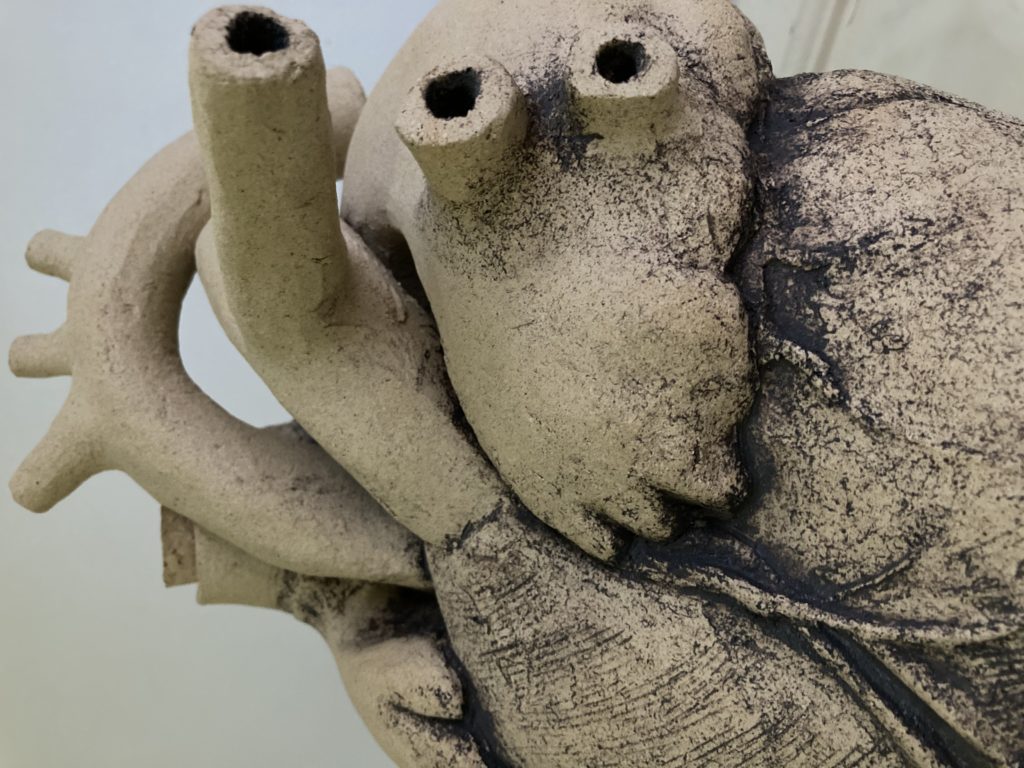
DESCRIPCIÓN DE LA OBRA / DESCRIPTION
La pieza es un corazón humano realizado a mano mediante el modelado, con gres con chamota. El interior de la pieza es hueco, sin textura y diseñado a modo de vasija para contener líquido. Se ha trabajado a conciencia en el alisado de esta zona para evitar la existencia de recovecos o huecos que pudieran suponer concentración de suciedad con el uso. La apariencia externa es realista, tratándose de una imitación, lo más fiel posible, del órgano real. Se trata de una superficie texturizada allí donde es necesario para conseguir ese nivel de detalle y realismo (venas, fibra del músculo, rugosidad). Como se especifica en la contextualización histórica, la estética de la pieza es realista. Ya se ha comentado que se ha procurado una imitación fiel del corazón humano, sin embargo se han tenido que hacer una serie de modificaciones para facilitar la utilidad del objeto como porrón de vino y la ergonomía del mismo. Para ello, se ha dado una menor inclinación al objeto de cerámica con respecto al órgano real, para favorecer un mejor apoyo de la pieza y una mayor estabilidad de la misma. Para este fin también, se ha alargado ligeramente la planta de la pieza y se le han añadido dos pequeñas protuberancias a modo de patas en la punta de la misma para evitar que la pieza se caiga para cualquiera de los dos lados. Se han acortado algunas de las salidas o “arterias” por tener una función meramente decorativa y, de ser demasiado largas, podrían sufrir golpes y roturas, o ser incómodas para el agarre del objeto. Por el contrario, se ha alargado la “arteria” que queda al frente de la pieza con respecto al órgano real para que sirva de pitorro. Excepto la “vena” de entrada de líquido y la “arteria” con función del pitorro, el resto están cerradas en alguno de sus puntos, pues de lo contrario el líquido saldría por cualquiera de ellas y su función sería nula.
The piece is a human heart made by hand through modeling, with stoneware with chamotte. The interior of the piece is hollow, without texture and designed as a vessel to contain liquid. Work has been done conscientiously in smoothing this area to avoid the existence of nooks and crannies that could lead to a concentration of dirt with use. The external appearance is realistic, being an imitation, as faithful as possible, of the real organ. It is a textured surface where it is necessary to achieve that level of detail and realism (veins, muscle fiber, roughness). As specified in the historical contextualization, the aesthetic of the piece is realistic. It has already been commented that a faithful imitation of the human heart has been sought, however a series of modifications have had to be made to facilitate the usefulness of the object as a wine jug and its ergonomics. For this, the ceramic object has been given a lower inclination with respect to the real organ, to favor a better support of the piece and a greater stability of it. For this purpose also, the plant of the piece has been slightly lengthened and two small protrusions have been added as legs on the tip of it to prevent the piece from falling to either side. Some of the exits or «arteries» have been shortened because they have a purely decorative function and, if they are too long, they could suffer bumps and breaks, or be uncomfortable for the object to grip. On the contrary, the «artery» at the front of the piece has been lengthened with respect to the real organ to serve as a spout. Except for the fluid inlet «vein» and the «artery» with the function of the spout, the rest are closed in some of their points, otherwise the liquid would come out through any of them and their function would be null.
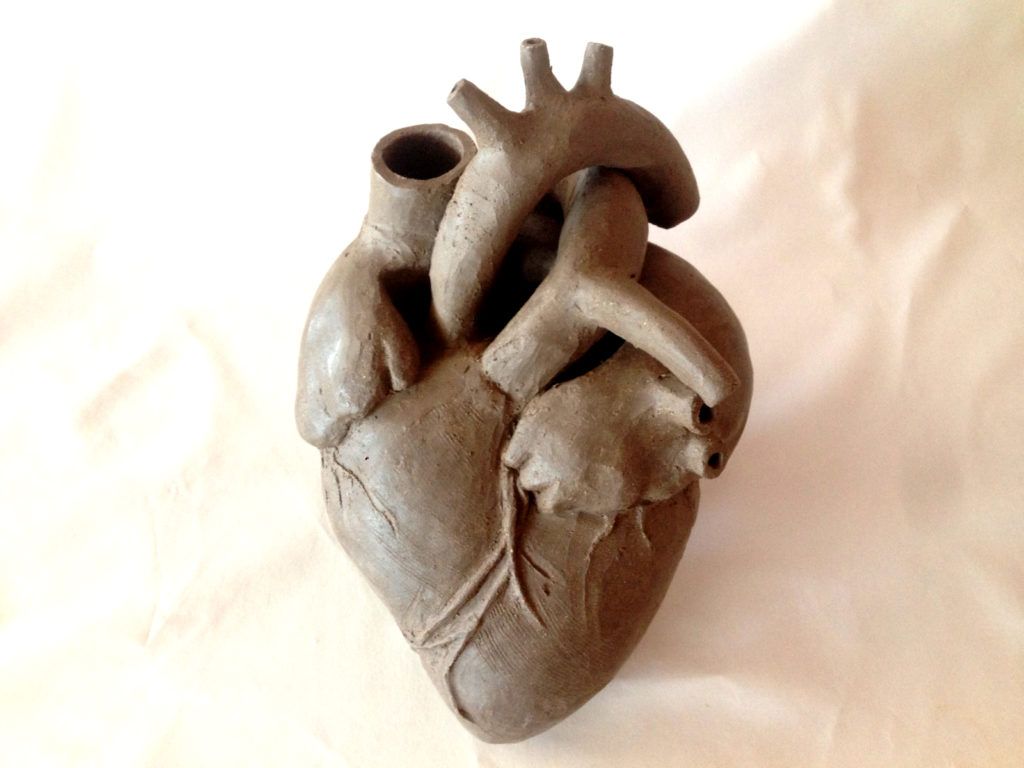
MATERIAL Y TÉCNICA / MATERIAL AND TECHNIQUE
El material de soporte utilizado es gres de alta temperatura con chamota.
La técnica de decoración y acabado final es la del lavado de óxidos con cocción de alta temperatura a 1250ºC.
The support material used is high-temperature stoneware with chamotte.
The final decoration and finishing technique is by oxide wash with high temperature firing at 1250ºC.
